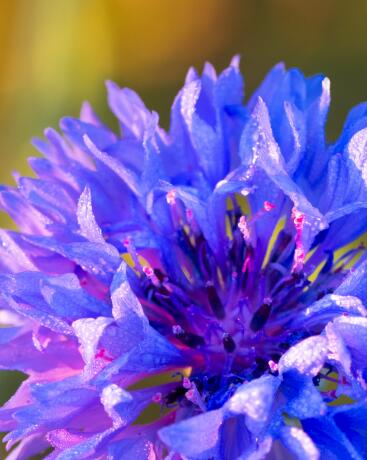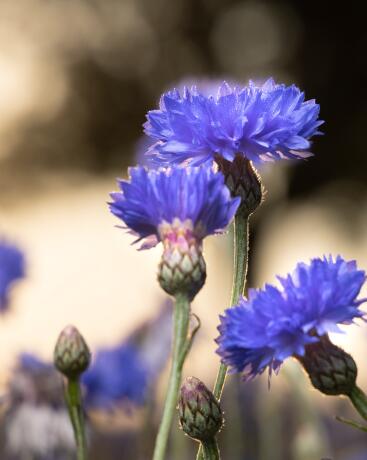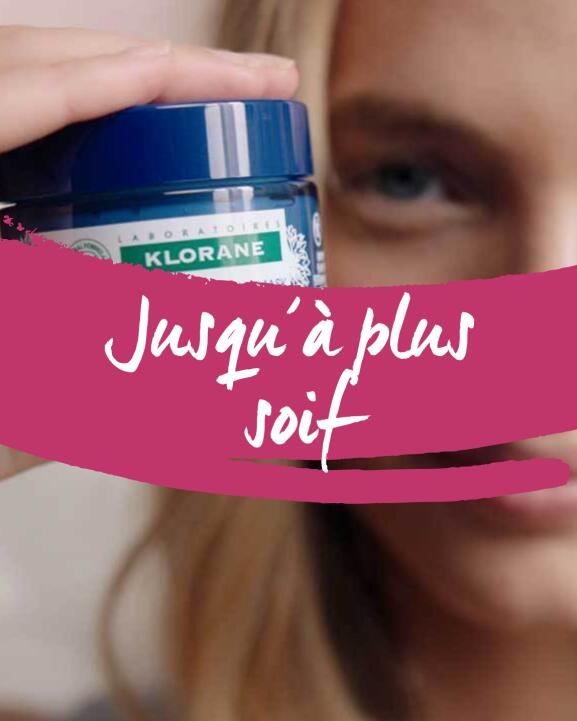
My herbarium
Cornflower, the little knapweed we love to see blooming
It is all around us, it has been with us since our childhood, it is in our products and on our plates. Eva Dumaine, botanist, tells us about plants in her own words. And exceptional natural active ingredients.
It's impossible to think of cornflowers without imagining large fields of blossoms on a mountainside… and to think that this pretty little flower almost completely disappeared from our pastures. It’s almost as though the cornflower has always been part of our imagination. Maybe because my grandmother used to sew one for us every 11 November to honour the veterans? Or was it because its frail frame would poke its head into the fields of my childhood, uninvited? In any case, whether wild or farmed, cornflowers are back and we’re just starting to celebrate!
When we talk about cornflowers on this side of the Atlantic, we are in fact referring to Cyanus segetum, a small herbaceous plant of the Asteraceae family that is also known as Centaurea cyanus, which can lead to confusion! Our Canadian cousins have solved the problem and call it Cornflower Centaury, so everyone is happy. The cornflower in our fields is a messicolous plant, meaning it prefers to grow among winter cereals such as barley, wheat or oats. These plants, which are essential for healthy crops, are becoming increasingly rare after having long been considered as weeds and chased away with weed killers. The cornflower has come a long way!
Two names, a thousand uses
Historically, the herbal distillate, or the decoction of the cornflower, was prescribed as an eyewash in case of eye and eyelid irritation and to combat conjunctivitis. It has even been given the French nickname "casse-lunettes” (eyeglass breakers)! Cute, right? Cornflower water is also used for skin and mucous membrane inflammation, or in cosmetics as an eye make-up remover due to its natural gentleness.
At Klorane, thanks to a 100% organic home-grown cultivation process in the Tarn region of France and an environmentially friendly extraction process, we have made cornflower the star ingredient of two product ranges: one dedicated to eye care, and the other, under the name Centaury, to anti-yellowing for the hair. Because it's not only atop the cakes of pastry chefs that these pretty colours come in handy! Its unique blue-violet pigment helps neutralise yellow highlights on grey, white or platinum blonde hair. It’s a real gem, indeed!
In the same range
- Eye makeup remover with Cornflower from organic farming
Cornflower
Eye makeup remover with Cornflower from organic farmingRemoves make-up - Soothes
NEWSLETTER
Nature often has a solution…
All our tips for taking care of yourself with natural ingredients.






